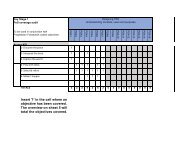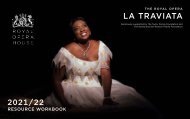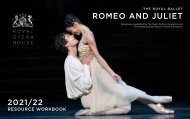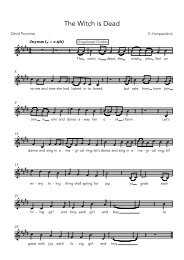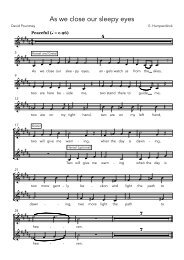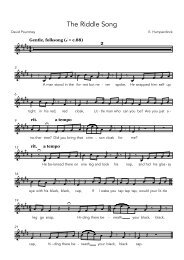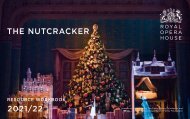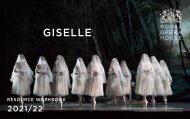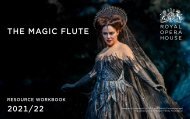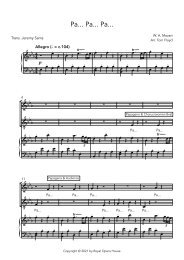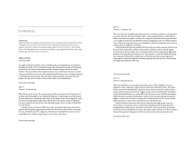Infra E-resource pack 2018
You also want an ePaper? Increase the reach of your titles
YUMPU automatically turns print PDFs into web optimized ePapers that Google loves.
EXTRA INFORMATION<br />
116<br />
HISTORY OF THE ROYAL BALLET<br />
HISTORY OF THE ROYAL OPERA HOUSE<br />
The Royal Ballet owes its existence to the vision of Dame Ninette de Valois,<br />
dancer, choreographer and entrepreneur, who assembled a small company<br />
and school, the Vic-Wells Ballet, and in 1931 persuaded Lilian Baylis to provide<br />
it with a home at the Sadler’s Wells Theatre in North London. (The Company<br />
also performed at the Old Vic Theatre, hence its original name.) They remained<br />
at Sadler’s Wells Theatre until 1939 and spent the war years touring widely<br />
in Great Britain and, to a lesser extent, in Europe, performing for the Allied<br />
troops. Immediately afterwards, in February 1946, they transferred to the<br />
Royal Opera House, performing a new full-length production of The Sleeping<br />
Beauty to re-open Covent Garden as a lyric theatre after its wartime closure.<br />
In 1956, to mark its 25th anniversary, the name The Royal Ballet was granted<br />
its Royal Charter.<br />
15 May 2006 was the 75th anniversary of The Royal Ballet. The Company<br />
marked this occasion with a recreation of The Sleeping Beauty. In December<br />
2006, following the award-winning success of Chroma, Wayne McGregor was<br />
appointed The Royal Ballet’s Resident Choreographer. In April 2007, conductor<br />
Barry Wordsworth was re-appointed Music Director for the Company. Monica<br />
Mason was created a Dame Commander for her services to dance in the<br />
Queen’s Birthday Honours List published on 13 June 2008. She became<br />
Director of The Royal Ballet in December 2002 and was succeeded by Kevin<br />
O’Hare in 2012. That year saw a further two appointments to The Royal Ballet,<br />
both from former students of The Royal Ballet School and now acclaimed<br />
choreographers: Christopher Wheeldon as Artistic Associate and Liam Scarlett<br />
as Artist in Residence. From the start of the 2015/16 Season conductor Koen<br />
Kessels took over as Music Director, while Wordsworth continues as Principal<br />
Guest Conductor.<br />
The current Royal Opera House building on Bow Street in Covent Garden,<br />
London, is the third theatre on the site following disastrous fires in 1808, when<br />
23 firemen died tackling the blaze, and again in 1856, when Queen Victoria<br />
visited the ruins the day after the fire. The façade, foyer and auditorium date<br />
from 1858, but almost every other element of the present complex dates from<br />
an extensive reconstruction in the 1990s. The main auditorium seats 2,256<br />
people, making it the third largest in London, and consists of four tiers of boxes<br />
and balconies and the amphitheatre gallery. The proscenium arch is 12.20 m<br />
wide and 14.80 m high and the iconic Royal Opera House velvet curtain weighs<br />
more than two tonnes – that’s the weight of a family car or an elephant.<br />
The main auditorium is a Grade I listed building and is the home of The Royal<br />
Opera, The Royal Ballet and the Orchestra of the Royal Opera House. The<br />
original building was constructed in 1732. In 1734, the first ballet was presented<br />
there. That year, Handel’s first season of London operas began. A number of his<br />
operas and oratorios were specifically written for Covent Garden and had their<br />
premieres there.<br />
Early 20th-century dancer Anna Pavlova was the world’s first truly global ballet<br />
superstar and performed regularly at the Royal Opera House. It’s estimated<br />
that between 1910 and 1925, she gave more than 3,500 performances and<br />
notched up more than 300,000 miles on tour (that’s further than the distance<br />
from the Earth to the Moon).<br />
During World War II, the Royal Opera House was used as a dance hall. It was<br />
the super club of its day – converted into a dance hall it played host to 1,500<br />
jitterbugging dancers each night. Ivy Benson and her all-female band were a<br />
regular feature.<br />
Did you know?<br />
In 1937 a new art form<br />
graced the Royal Opera<br />
House stage – ice ballet.<br />
It was an ambitious project<br />
that saw the theatre’s<br />
historic stage transformed<br />
into an enormous indoor<br />
ice rink, which was no small<br />
feat. To create a sheet of<br />
ice four inches thick the<br />
builders laid lengths of<br />
pipe across the stage and<br />
installed £10,000s’ worth<br />
(the equivalent of more<br />
than £600,000 today)<br />
of ice-making apparatus<br />
in the wings.<br />
Members of the Royal Family have been regular visitors since the 1830s, when<br />
Queen Victoria and Prince Albert would frequent the Royal Box up to four<br />
times a week in high season. The late Queen Mother used to visit every year for<br />
her birthday, last visiting for her 101st birthday. Following tradition, when the<br />
current Queen attends gala performances, the lampshades in the box below<br />
are changed from red to cream, a custom initiated by Queen Victoria who<br />
wanted to avoid appearing red or flushed.<br />
You can find out more about the history of the Royal Opera House here.





